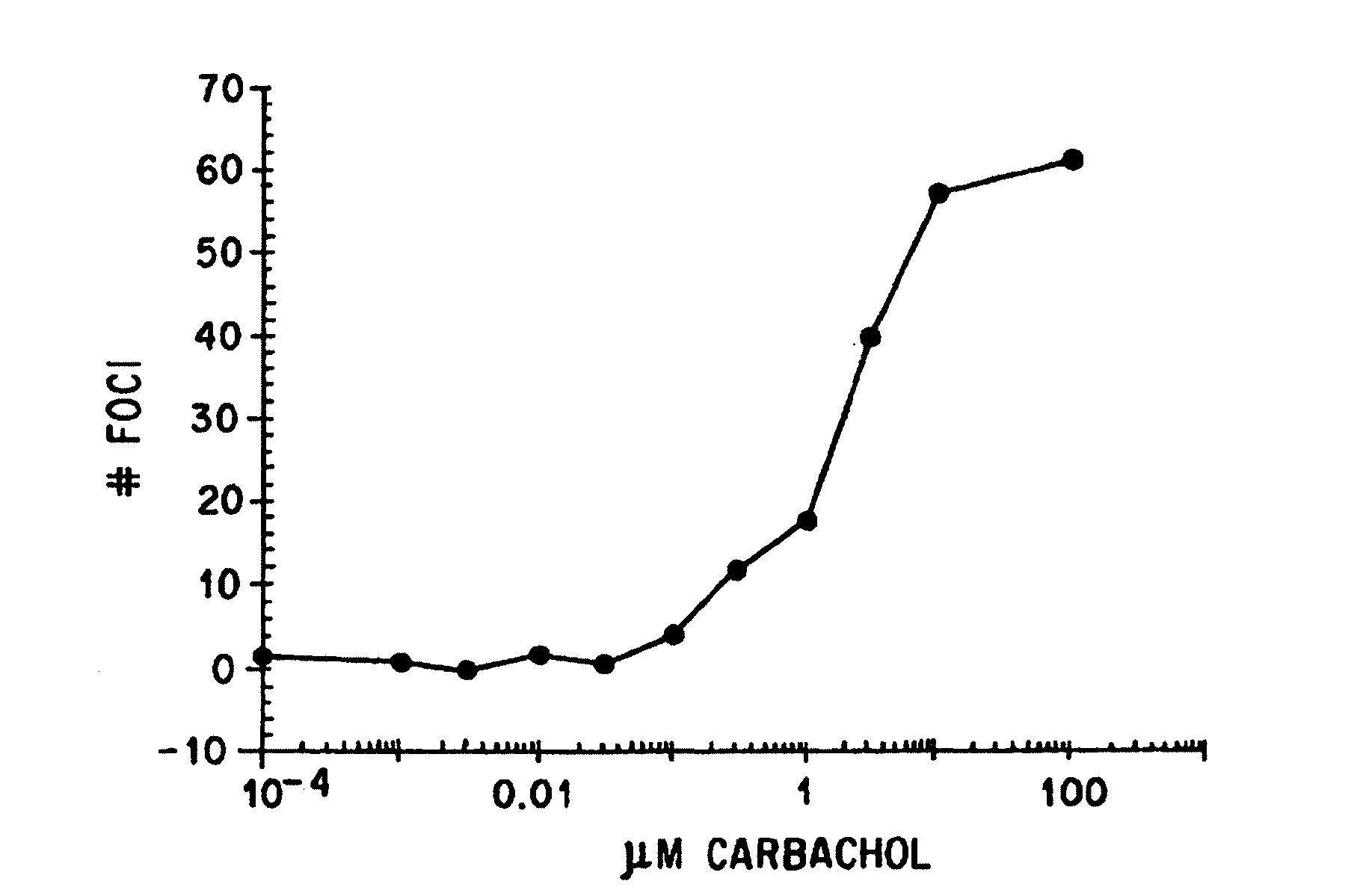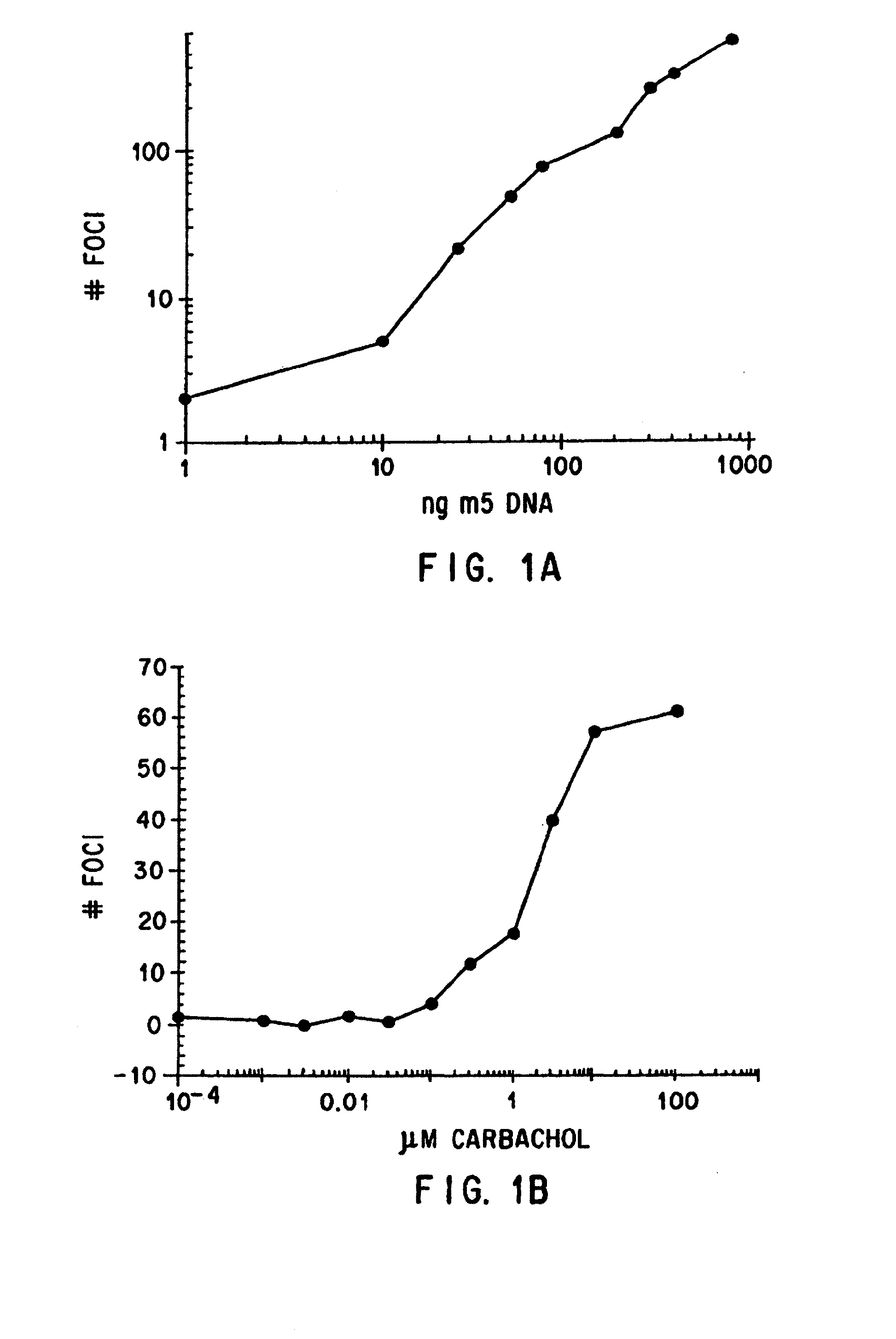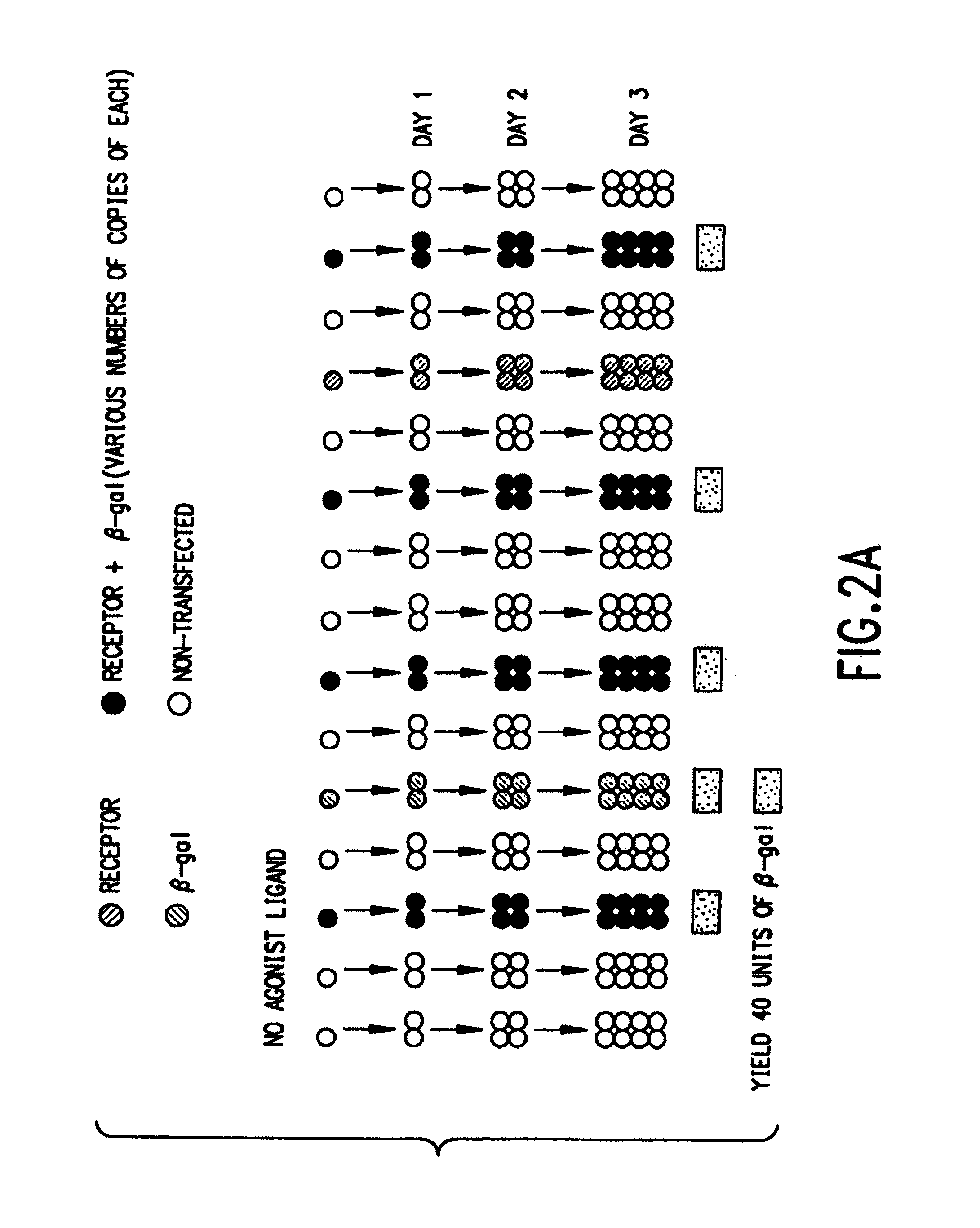Identification of ligands by selective amplification of cells transfected with receptors
- Summary
- Abstract
- Description
- Claims
- Application Information
AI Technical Summary
Benefits of technology
Problems solved by technology
Method used
Image
Examples
example 1
β-Galactosidase Activity in Cells Transfected with the trk A Receptor
[0232]Nerve growth factor (NGF) is an agonist for the trk A receptor. NGF-stimulated trk A receptors activate tyrosine phosphorylation, and induce foci in NIH 3T3 cells. FIG. 3a illustrates data from an experiment where trk A receptor-transfected cells were grown in the presence or absence of NGF following the general procedure described above. A 10 cm plate of NIH 3T3 cells were transfected with 5 μg of trk A receptor DNA (cloned substantially as described by Kaplan et al., Science 252, 1991, p. 554, and Martin-Zanca et al., Mol. Cell. Biol. 4, 1989, p. 24) and 5 μg of β-gal DNA. The cells were washed after 24 hrs, and after 48 hrs the cells were transferred to 96 wells of a microtiter plate and grown in the presence or absence of NGF for the indicated number of days. β-gal activity was induced by NGF, with a marked induction observed within three days. The data shown in FIG. 3A and FIG. 3B were means of triplicat...
example 2
β-Galactosidase Activity in Cells Transfected with Muscarinic Receptor Subtypes m1, m2, m3, m4 and m5
[0234]Muscarinic acetylcholine receptors that stimulate phospholipase c (m1, m3, m5) are able to stimulate cellular growth and induce foci in NIH 3T3 cells, only when the transfected receptors are activated by ligands that have agonist activity. In monoclonal lines isolated from NIH 3T3 cells transfected with these receptors, the agonist dose-response relationships for stimulation of phospholipase c, stimulation of mitogenesis and foci are identical, and these responses are blocked by the muscarinic receptor antagonist atropine. The m2 and m4 muscarinic receptors do not strongly stimulate phospholipase c in NIH 3T3 cells, nor do they induce foci. These data indicate that ligand-induced changes in cellular growth can be used as an assay of the pharmacology of some muscarinic receptor subtypes (Gutkind et al., PNAS 88, 4703 (1991); Stephens et al., Oncogene 8, 19-26 (1993)).
[0235]The d...
example 3
Luciferase Activity in Cells Transfected with the m5 and m2 (Gq-15) Muscarinic Receptors
[0241]Following the general protocol described above, amplification of the m5 muscarinic receptor and the m2 muscarinic receptor (co-transfection with Gq-15) was determined using firefly luciferase (luc, pGL2-control vector, Promega) as a marker instead of β-galactosidase. Receptor, marker, and G-protein DNA concentrations were identical to those described for the β-galactosidase experiments in Example 2. The ED50's of carbachol were 0.22±0.1 μM for m5 and 0.14±0.11 μM for m2 / q-i5 for inducing activity of firefly luciferase. Firefly luciferase was assayed as recommended by the manufacturer (Promega). The data obtained indicate that, like β-galactosidase, firefly luciferase can serve as a sensitive marker of muscarinic receptor activation by a ligand.
PUM
| Property | Measurement | Unit |
|---|---|---|
| Volume | aaaaa | aaaaa |
| Volume | aaaaa | aaaaa |
| Volume | aaaaa | aaaaa |
Abstract
Description
Claims
Application Information
 Login to View More
Login to View More - R&D
- Intellectual Property
- Life Sciences
- Materials
- Tech Scout
- Unparalleled Data Quality
- Higher Quality Content
- 60% Fewer Hallucinations
Browse by: Latest US Patents, China's latest patents, Technical Efficacy Thesaurus, Application Domain, Technology Topic, Popular Technical Reports.
© 2025 PatSnap. All rights reserved.Legal|Privacy policy|Modern Slavery Act Transparency Statement|Sitemap|About US| Contact US: help@patsnap.com



